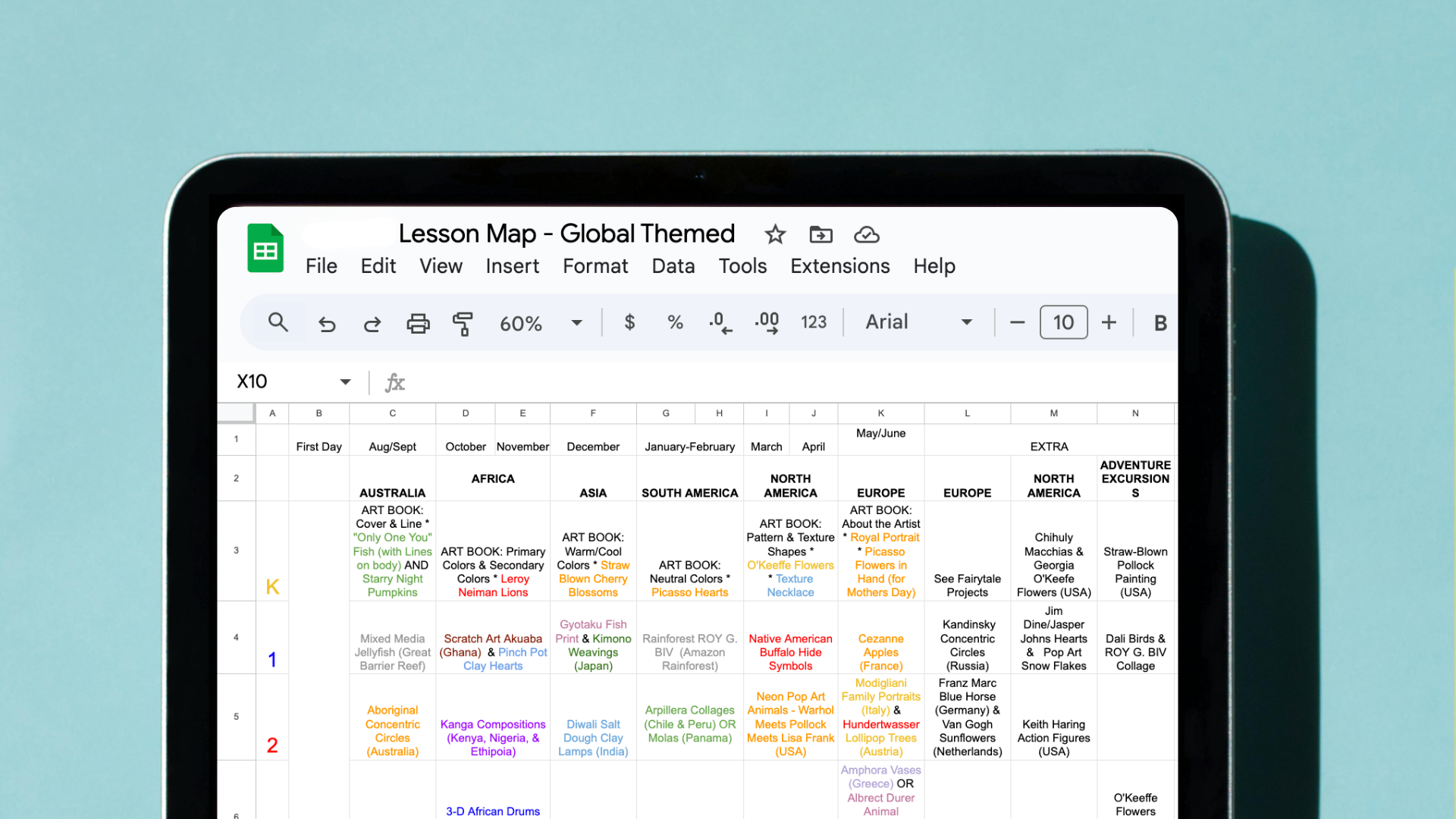Lessons in UX: How Teaching Prepared Me for the Design World
A Natural Transition to UX Design
You’ve certainly heard it said, “Those who can’t do, teach,” or some other phrase that mimics the same tired sentiment. I argue that those who teach often do the most meaningful work, and they do it with skill.
The jump from education to UX design isn’t as big as it might seem. At their core, both fields revolve around understanding people, designing experiences, and fostering meaningful interactions. As a teacher-turned-UX designer, I’ve come to realize that teaching prepared me for this shift in ways I never expected.
At first glance, teaching and UX design might seem like two completely different worlds. One happens in classrooms, the other in digital spaces. One focuses on education, the other on usability. But if you take a closer look, they have a lot more in common than you might think.
Both fields revolve around understanding people, whether it’s students or users, and designing experiences that support their needs, remove obstacles, and help them succeed. If you’ve ever adjusted a lesson plan on the fly to better engage your students or restructured your classroom to improve learning flow, you’ve already been thinking like a UX designer.
Let’s break down the surprising ways teaching and UX overlap.
Student-Centered = User Centered
Great UX design starts with putting the user first, just like great teaching starts with putting the student first. As a teacher, you analyze students’ learning styles, adapt lessons to their needs, and adjust based on their feedback. In UX, it’s the same process, except the “students” are users, and the goal is to create intuitive, accessible experiences that make their lives easier.
For example, when designing an app, a UX designer considers how different users will navigate it and what challenges they might face. Similarly, as a teacher, you design lesson plans that accommodate different learning styles, whether it’s visual aids for visual learners or hands-on activities for kinesthetic learners. In both cases, success comes from truly understanding the people you’re designing for.
Lesson Map = Wireframes
I created this lesson map my last year teaching.
A wireframe is a blueprint for a digital product. It maps out the structure before the design details are added. Sound familiar? That’s exactly what lesson plan outlines do for teaching.
You don’t walk into a classroom and just wing it (well, most of the time). You create a structured map for the school year that outlines key learning objectives, teaching strategies, and assessment methods.
Just like a wireframe helps designers focus on usability before aesthetics, a lesson map outline ensures you prioritize comprehension before content delivery. And just like in UX, you’re constantly refining that framework based on feedback, making adjustments to improve effectiveness.
Parent-Teacher Conferences = Stakeholder Meetings
Parent-teacher conferences might not seem relevant to UX at first, but hear me out. As a teacher, you juggle multiple stakeholders (students, parents, administrators) all with different needs and expectations. In UX, you do the same with product managers, developers, and business leaders.
Both roles require strong communication and negotiation skills. In a parent-teacher conference, you advocate for your students while addressing concerns from parents. In UX, you advocate for users while balancing business goals. In both cases, you’re the bridge between different perspectives, ensuring that the people you serve get the best possible experience.
Student Assessments = Usability Testing
Ever watched your students struggle with an assignment and realized you needed to tweak your approach? That’s usability testing in action. In UX, usability testing involves observing how real users interact with a design, identifying pain points, and refining the product to improve their experience.
Teachers do the same thing every day. You observe how students engage with a lesson, take note of what works (and what doesn’t), and adjust accordingly. Whether it’s changing up an activity, re-explaining a concept, or providing additional support, you’re constantly iterating based on real-world feedback—just like a UX designer refines a product after testing.
Lesson Plan = User Journeys
If you’ve ever created a lesson plan, congratulations! You already know how to map a user journey. Both involve breaking down complex ideas into manageable steps, anticipating where people might get stuck, and guiding them toward a clear outcome.
When I designed my first UX project, I approached it like a lesson plan. I asked myself:
● What’s the objective? (What does the user need to accomplish?)
● What are the steps? (How will they get there?)
● Where might they struggle? (What roadblocks could they face?)
● How can I approach this with empathy? (What is the user thinking, feeling, and doing?)
By thinking like a teacher, I could design more intuitive user flows. Just like students benefit from clear instructions and engaging activities, users appreciate seamless navigation and helpful cues.
One-on-One Student Meetings = User Interviews
Great teachers know that one-on-one time with students is invaluable. Whether it’s a struggling student who needs extra support or a high achiever looking for a challenge, these conversations provide insight into individual needs. These personal interactions allow teachers to tailor their approach and ensure every student’s unique learning style is addressed.
In UX research, user interviews serve the same purpose. Designers sit down with users, ask thoughtful questions, and dig deep to understand their experiences and frustrations. Just like teachers, UX designers listen carefully to users’ needs, using these insights to refine their designs.
Both teachers and UX designers use these insights to create more effective, personalized experiences that drive success.
Teaching & Leading Meetings = Presentations
If you’ve ever led a lesson, run a faculty meeting, or presented at a conference, you already have strong UX presentation skills.
In education, you're constantly tasked with presenting complex information in an engaging and accessible way, whether it's breaking down challenging concepts for your students or presenting information to parents or administrators. These same skills transfer seamlessly to UX design, where clear communication is essential.
UX designers often need to present research findings, advocate for design decisions, and collaborate with stakeholders. Just like in teaching, being able to explain complex ideas—whether to students or a design team—is crucial for success.
The ability to keep your audience engaged, adjust your approach depending on the audience's needs, and convey important information effectively is a vital skill in both fields.
Real-Time Lesson Adjustments = Rapid Iterations
Sometimes, a lesson just isn’t landing the way you expected. Maybe students are confused, disengaged, or struggling to keep up. What do you do? You pivot. Maybe you explain the concept in a new way, add a hands-on activity, or switch up the classroom discussion.
UX designers do the same thing with rapid iterations. If a prototype isn’t working, they don’t scrap everything and start over. They tweak, refine, and test again. Being able to make quick adjustments in response to real-time feedback is a valuable skill in both fields.
Classroom Set Up = Sitemaps
A well-organized classroom helps students navigate the space efficiently, just like a well-structured sitemap helps users navigate a digital product. Both require thoughtful planning to ensure smooth interactions and minimize frustration.
Creating a clear layout allows students to focus on learning rather than being distracted by confusion, just as a logical sitemap allows users to complete tasks without unnecessary steps.
For example, if students constantly struggle to find supplies, you rearrange the classroom layout. Similarly, if users struggle to find key features in an app, a UX designer reorganizes the navigation.
In both cases, structure and accessibility are everything. Thoughtful organization lays the foundation for success, whether in the classroom or the digital world.
Reviewing Student Work = Analyzing User Feedback
Any educator knows that grading is much more than assigning scores. It's about understanding where students are excelling and where they need more support. As a teacher, you dig into each student’s work to identify areas of improvement, tailoring your feedback to guide them toward success.
In the same way, analyzing user feedback in UX design serves a critical purpose: understanding where the design is working and where it falls short. Just as teachers review students' progress and adjust their lessons, designers use feedback to fine-tune their designs.
UX designers review usability test results, customer feedback, and analytics to pinpoint pain points, assess user satisfaction, and prioritize improvements. For example, if users struggle with navigation on a website, designers can iterate and refine the interface, just like how a teacher might adjust lesson plans if a group of students is struggling with a particular concept.
This constant evaluation and adjustment are key to both successful teaching and UX design.
Project-Based Lessons = UX Projects
Project-based learning helps students solve real-world problems through hands-on experience, allowing them to apply what they've learned in a meaningful context.
In UX, design projects follow a similar structure. Its all about identifying problems, conducting research, brainstorming solutions, and iterating based on feedback. This approach requires the same focus on experimentation and refinement, ensuring the final product truly meets the users' needs.
Just like students learn best when they engage with a subject in meaningful ways, UX designers create the best products by actively involving users throughout the design process. By gathering insights, testing prototypes, and refining designs based on feedback, designers ensure they stay aligned with the user's experience, much like a teacher adapting lessons based on student progress.
Interdisciplinary Teams = Interdepartmental Collaboration
As a teacher, you’ve likely worked with a range of colleagues. Whether it’s teaming up with educators who teach different subjects to align lesson plans, collaborating with counselors to address students’ needs, or working with administrators to improve school-wide initiatives collaboration is essential.
Teachers must navigate these relationships to ensure that every student gets the support they need. This kind of interdisciplinary collaboration is key to creating a holistic learning environment where every aspect of a student’s development is considered.
UX designers work in a similar way, collaborating with various specialists to create a well-rounded product. Designers need to communicate and align with developers to ensure technical feasibility, marketers to ensure the product fits the market, researchers to validate user needs, and business leaders to ensure the product aligns with the company’s goals.
The ability to work across functions and speak each discipline’s language is a critical skill in both teaching and UX design. Whether in the classroom or in a design studio, effective collaboration ensures that every perspective is considered and that the final product, be it a lesson plan or a digital interface, works seamlessly.
Teaching Skills = UX Success
At its heart, UX design is about crafting experiences that meet people’s needs. As a teacher, you’ve been doing that all along. From designing engaging lessons to adapting based on student feedback, you already have a strong foundation in user experience.
Teachers are natural problem-solvers, critical thinkers, and experts at tailoring their approach based on the needs of those they’re serving. These are the same qualities that make for a great UX designer. Your ability to break down complex concepts, adapt to changing circumstances, and gather meaningful insights from others are exactly the qualities that will help you thrive in the UX field.
Remember, the leap from teaching to UX design doesn’t mean starting from scratch. It’s about leveraging the experience you’ve gained in the classroom to design better experiences in the digital world. You already have a toolbox full of valuable skills that will help you succeed in this new field.
You’ve got this. The world of UX would be lucky to have you.
If you want to dive deeper into why teachers make the best UX designers, check out this post on the specific, transferable skills that make educators such strong candidates for UX roles: Teachers Make the Best UX Designers (Here’s Why!)








